Latest News
An Enquiry from the USA

Norman Cornish is one of the most celebrated 20th Century artists whose work is held in public and private collections throughout the UK and beyond. ‘Long lived and prolific’ would be a succinct description of his life and career as a professional artist. It is hardly surprising that many of his early works have for many years been ‘handed down’ to succeeding generations of family members via inheritance.
Occasionally a Cornish painting appears under unusual circumstances and in the summer of 2020, one such painting originally purchased by LS Lowry at The Stone Gallery (Newcastle) featured in an auction in Glasgow. More recently an enquiry was received initially to The Spennymoor Settlement from an owner in the USA. The provenance was fascinating.
The fourteenth annual Sketching Club exhibition in November 1946 was to prove pivotal in the career of the young artist. G Stevens a London art exhibition organiser and professional artist was quite taken by the quality of the work by Cornish. His visit was followed by another visitor, Dr R.W. Revans, Director of Education to the newly created National Coal Board and he bought five pictures for display in Hobart House, HQ of the Coal Board in London.
Dr Revans was later inspired to organise the ‘Art by the Miner ‘exhibition in October 1947 held at the Academy Cinema in London’s Oxford Street. Cornish was invited to include seven works and also ‘hang the exhibition’ in view of his previous experience at The Spennymoor Settlement. He had to hang the exhibition twice because the members of ‘The Ashington Group’ insisted that their work should be hung together. The Ashington Group and their activities were later to receive acclaim as the subject of a successful play written by Lee Hall who also wrote ‘ Billy Elliot.’ Norman and Sarah Cornish were guests of honour at the first night of ‘The Pitmen Painters’ at the Theatre Royal, Newcastle in 2011.
Dr Revans was later to become a pioneer in the concept of ‘positive ethos and improved performance’ in organisations, although the idea was slow to filter through to the management of collieries.
Cornish’s skill and confidence as a natural communicator resulted in him being invited to be interviewed live on television for the first time at Alexandra Palace studios in North London during the exhibition.
His painting titled, ‘Big Meeting’, along with the other four paintings and his subsequent TV appearance may in time be viewed as one of those moments which became pivotal in his emerging career as an artist. The painting was later purchased by a relative of the person who made the enquiry from the USA.
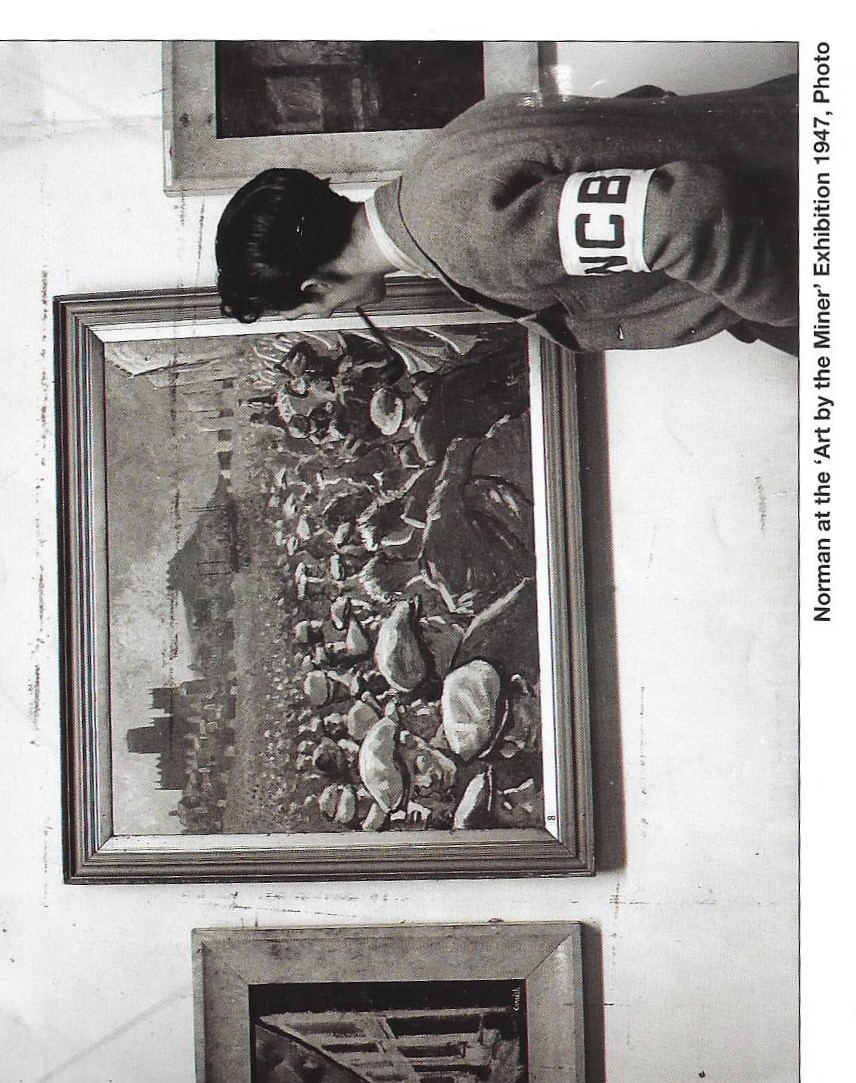
Tender and Timeless.
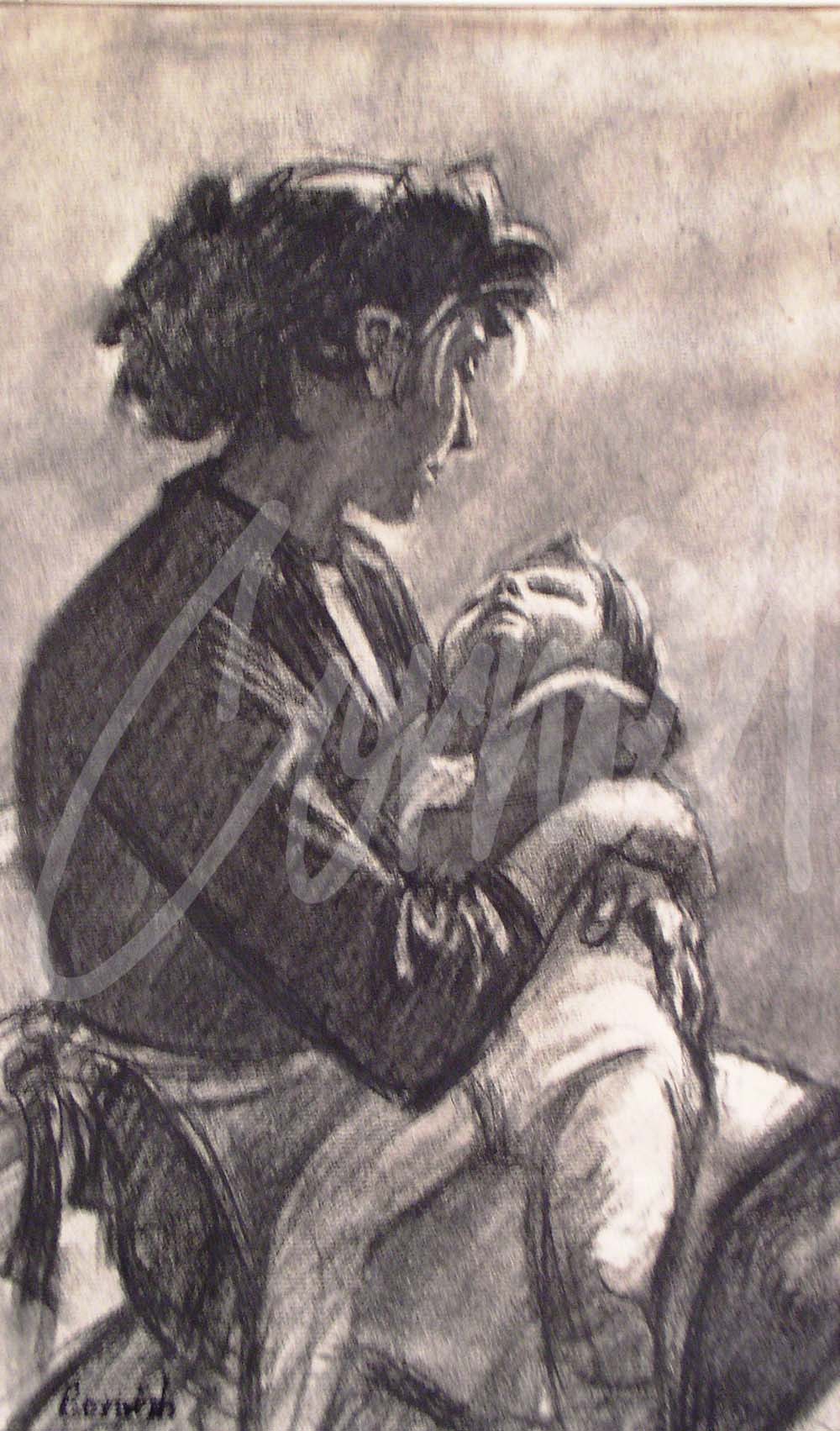
After marrying Sarah in 1946, and living first in rented rooms, the couple moved to their own house on nearby Catherine Street in which Cornish’s grandmother had once lived. In 1953 they returned to Bishops Close Street, to a Colliery house that was better equipped and more suited to family life after the arrival of their children, Ann and John. Here Cornish recorded the everyday life of his family in hundreds of deeply personal sketches.
The drawings provide a remarkable record of the children growing up from childhood to later adolescence. Cornish observed all aspects of domestic life, the children doing their homework, drying their hair, or watching television. Moments snatched to the sound of ‘hold it there’ or ‘don’t move.’ John often commented that they didn’t have many childhood photographs but he and Ann were often featured in drawings in the household setting.
Sarah would also be asked to hold a position in many different domestic settings such as knitting, peeling vegetables or darning socks, but rarely relaxing. Occasionally the domestic settings incurred intrusions from television film crews, reporters and prominent personalities who enjoyed visiting to engage Cornish in conversation and recording.
Outside, the street was also a busy thoroughfare as well as an adventure playground for the children playing on the slag heap or railway embankment.
The street was also a busy through-route for people walking to and from the factories at Low Spennymoor, and Dean and Chapter Colliery at Ferryhill via the bridge under the railway line at the end of the street.
The family remained in Bishops Close Street until 1967. The mines were closing, and more space was needed both for the growing family and for Cornish’s development as a professional artist. The move was made to Whitworth Terrace.
Cornish is noted for his depiction of that period in his life from the 1930s until the latter part of the 20th century. His scenes of life typical in communities throughout County Durham and other industrial areas of the country resonate with other people who lived through similar experiences, and thus feel deepening and strengthening emotional attachments to his work. Alongside this preservation of community, his family portraits stand the test of time and remain both tender and timeless.
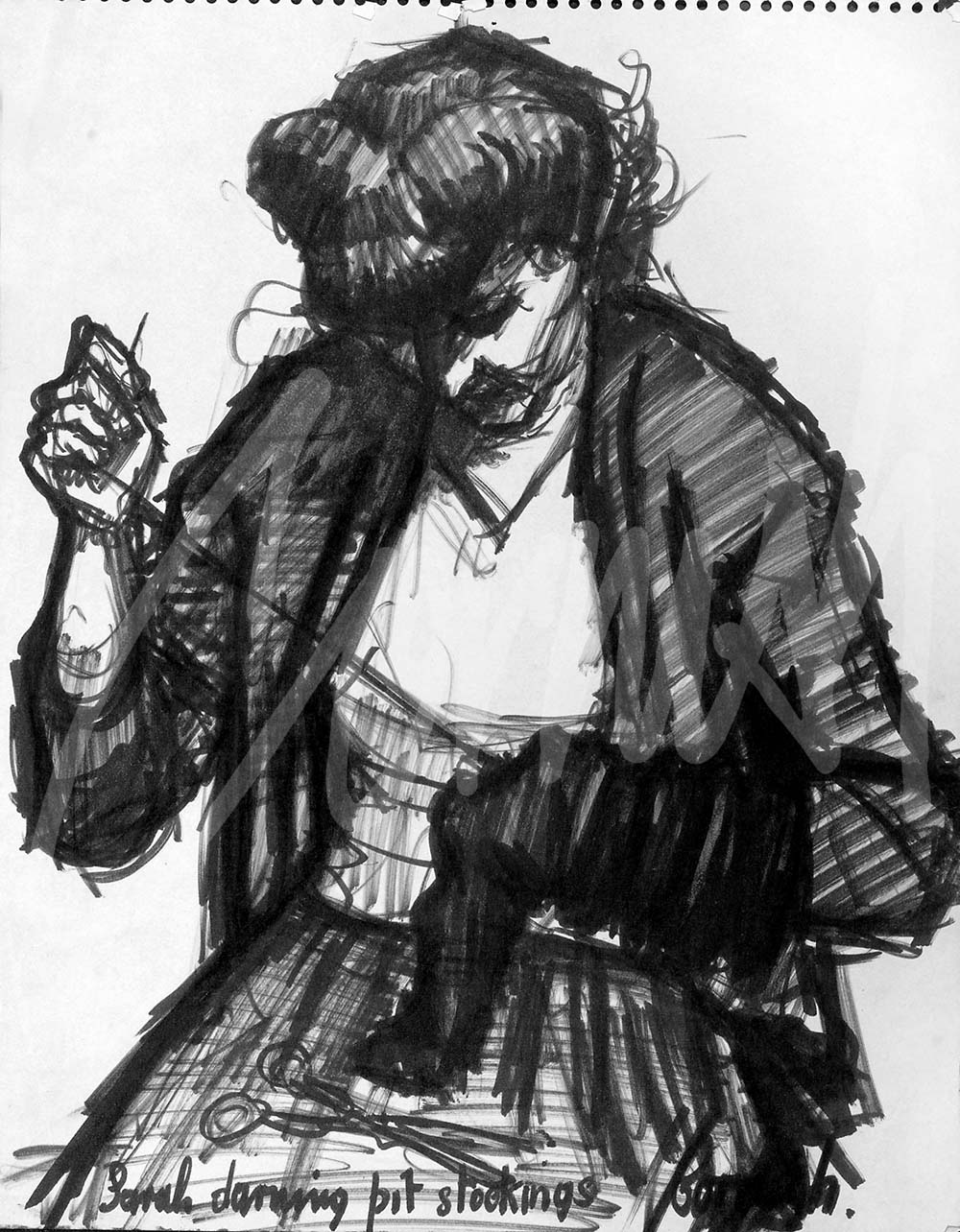
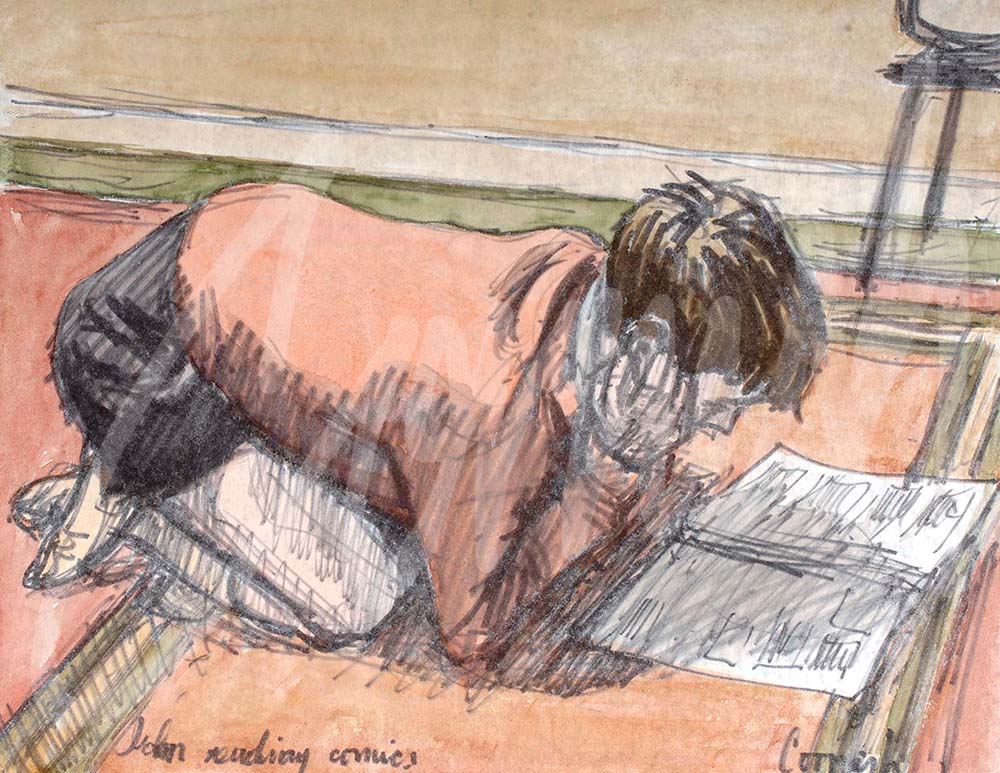
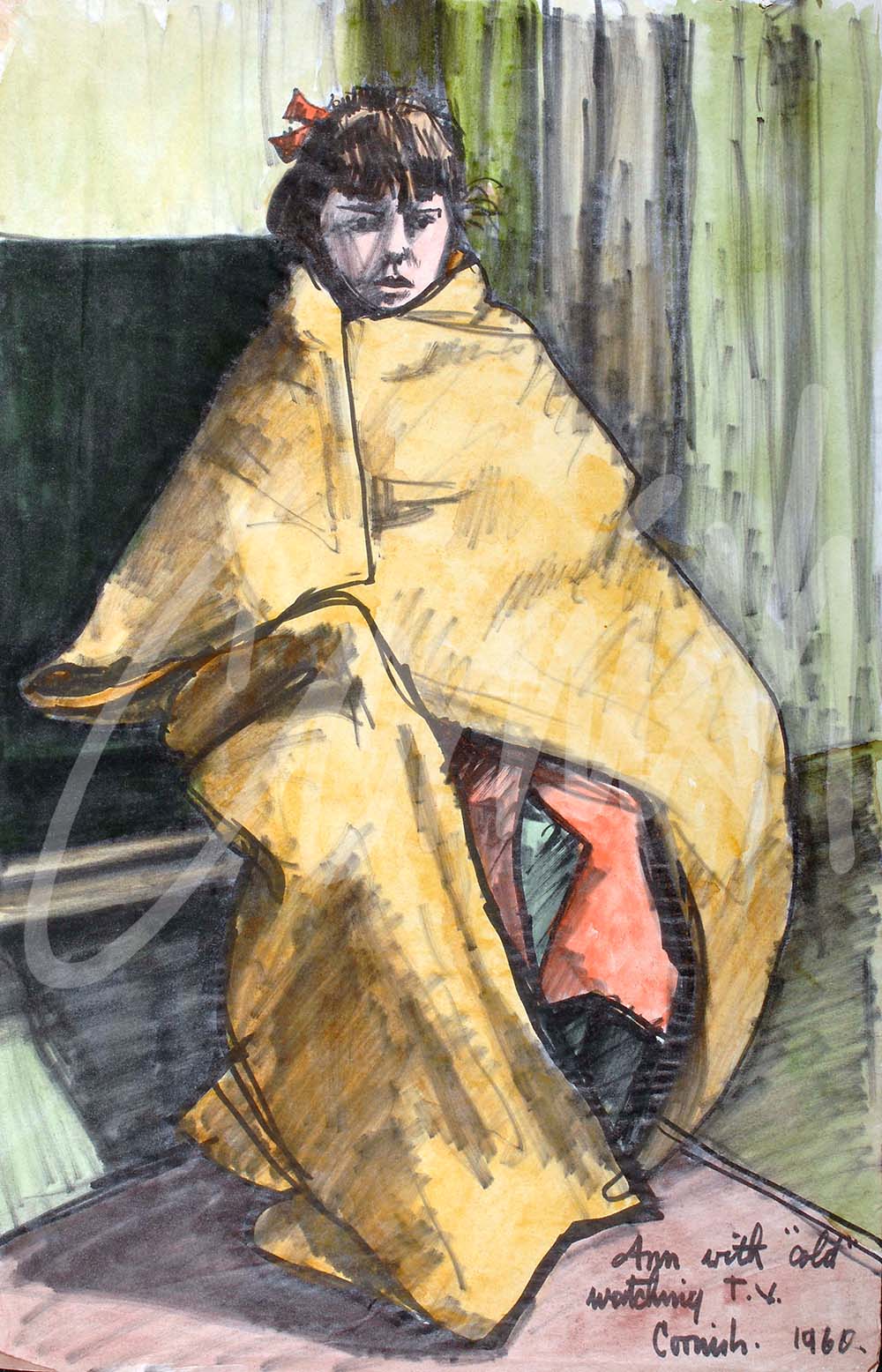
Parents: Jack and Florence
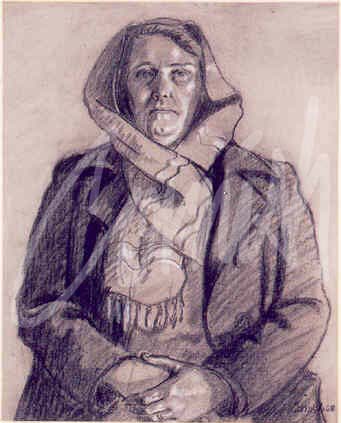
Norman Cornish was born in Oxford Street on the 18th of November 1919 and moved later to Bishops Close Street, adjacent to the gasworks, ironworks and railway embankment at the end of the street. Cornish shared the stone- terraced house with his parents Jack and Florence along with his younger brothers Tom, Jack, Jim, Billy, Bob and sister Ella.
The Times newspaper referred to Spennymoor as a place without a future, immersed in despair, desperation and futility. Housing conditions were primitive, no bathroom, gas lighting, and an outdoor earth closet. Epidemics of diphtheria, smallpox and scarlet fever were rife amongst the children.
In his autobiography ‘A Slice of Life,’ Cornish recalls that he only ever saw one book in his childhood home. Cornish’s father Jack was unemployed for some time during the Depression but eventually gained employment at Dean and Chapter Colliery. One of his father’s friends tried to persuade his father to allow Cornish to continue his education, but at the age of 14 he reluctantly took his young son to his colliery to get him ‘set on.’ He later started work on Boxing Day 1933, after walking three miles to the pit in the snow.
Florrie would always be busy seeing to the six boys and daughter Ella. Making clothes, ensuring meals were available and a plentiful supply of hot water for washing. The daily commitment to keep the family together and maintain some dignity must have been exhausting.
Cornish eventually gained permission to join the Sketching Club at The Spennymoor Settlement which he later described as, ’like crawling into a warm woolly sock after the pit’.
As his interest and skill in drawing developed, via the ‘Sketching Club’ at the Spennymoor Settlement, the advice from Bill Farrell to draw and paint what he knew became more significant and in his own words: ‘ Most of the members were steeped in landscape tradition but I’d rather draw things I saw in my house, like my mother preparing a meal or my father washing after coming back from the pit’.
Despite the harsh conditions he was later able to acquire a deep knowledge, of not only art history, but also literature and music. Cornish made the most of opportunities denied in his early years to become ‘well read’ and he could quote with confidence from Dickens and Shakespeare as well as enjoying his love of Classical Music and Opera.
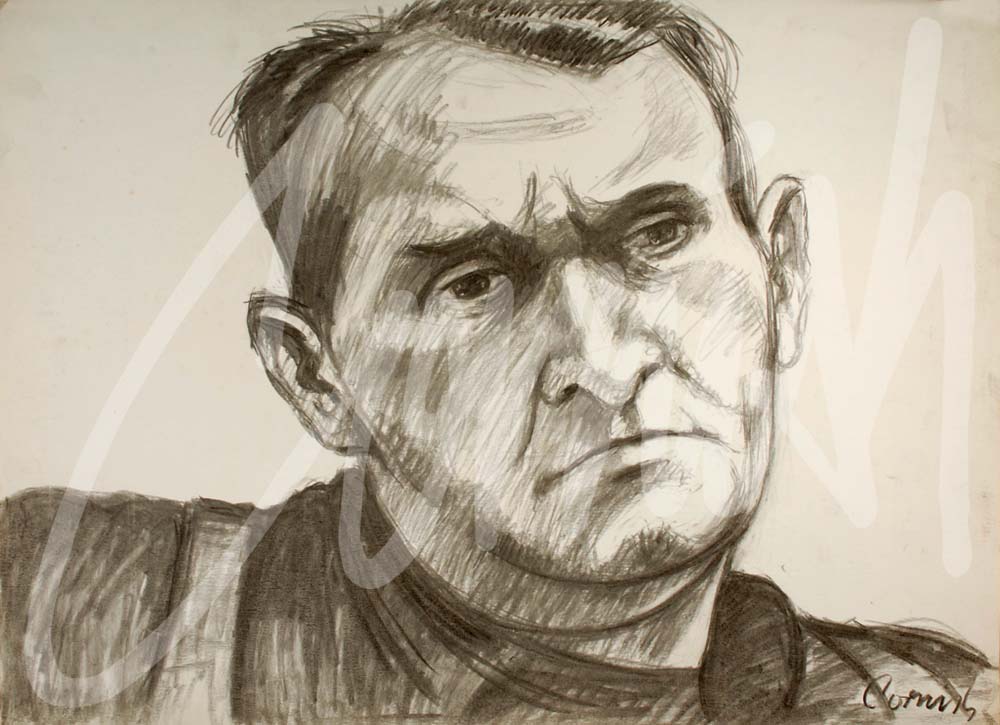
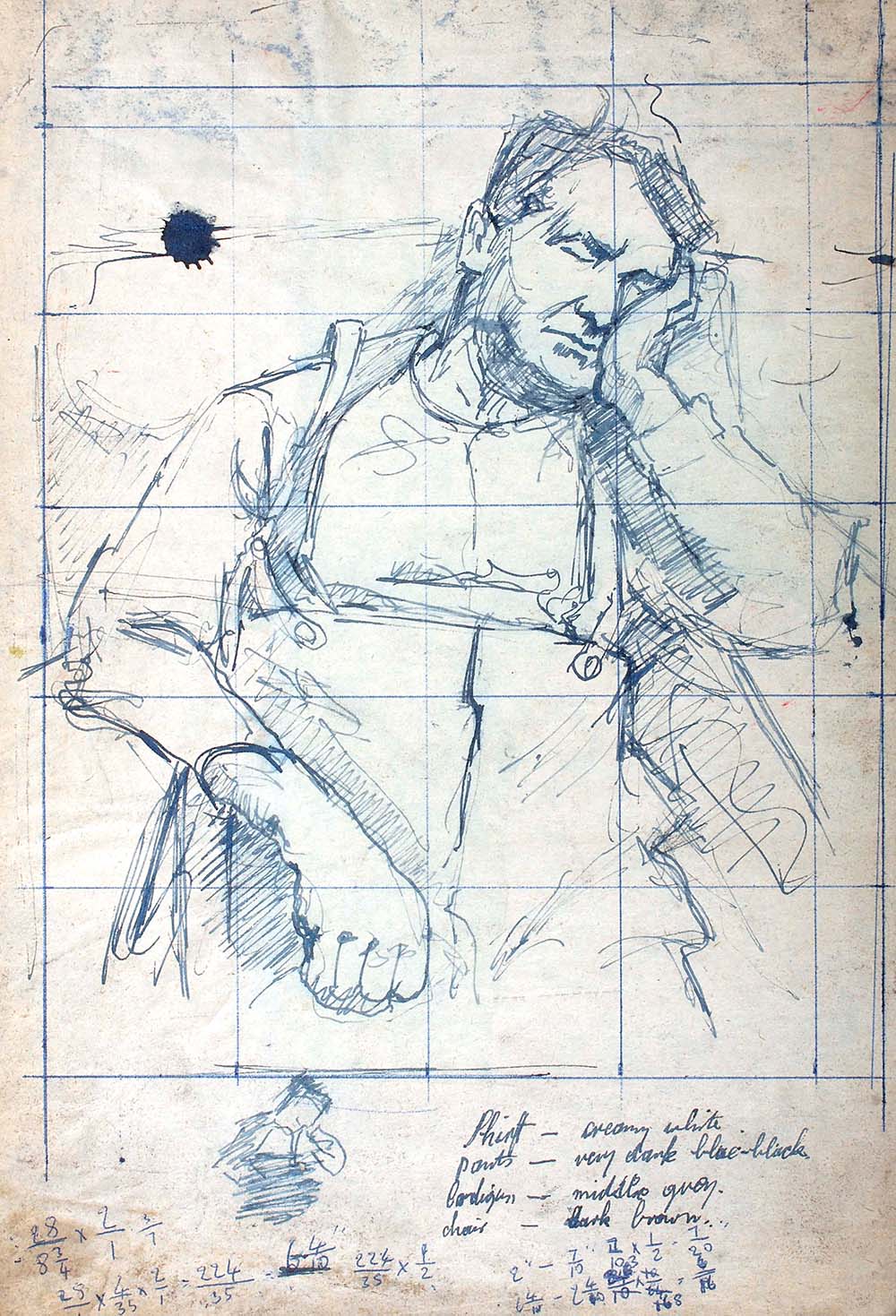
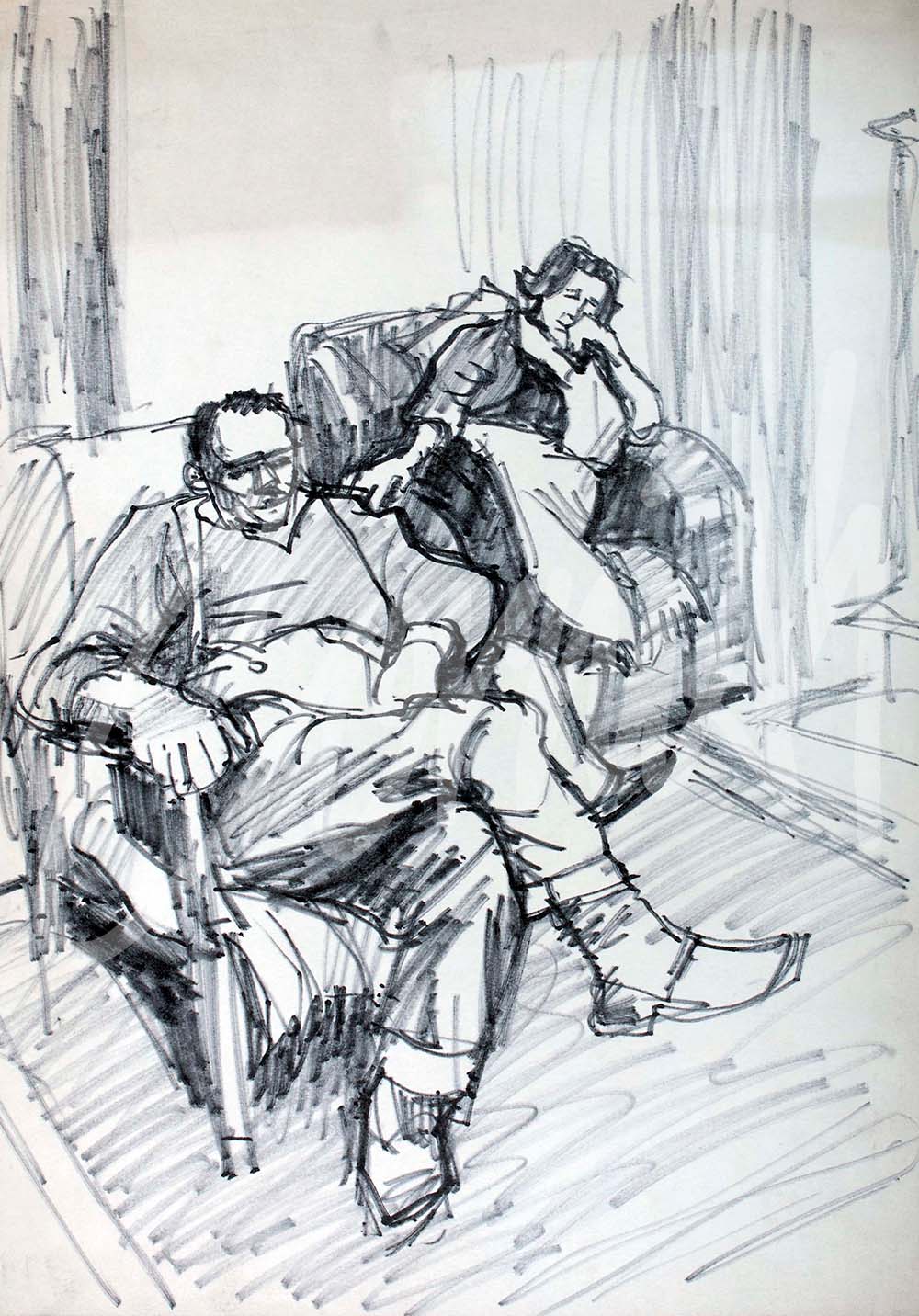
The Spennymoor Settlement Blue Plaque.
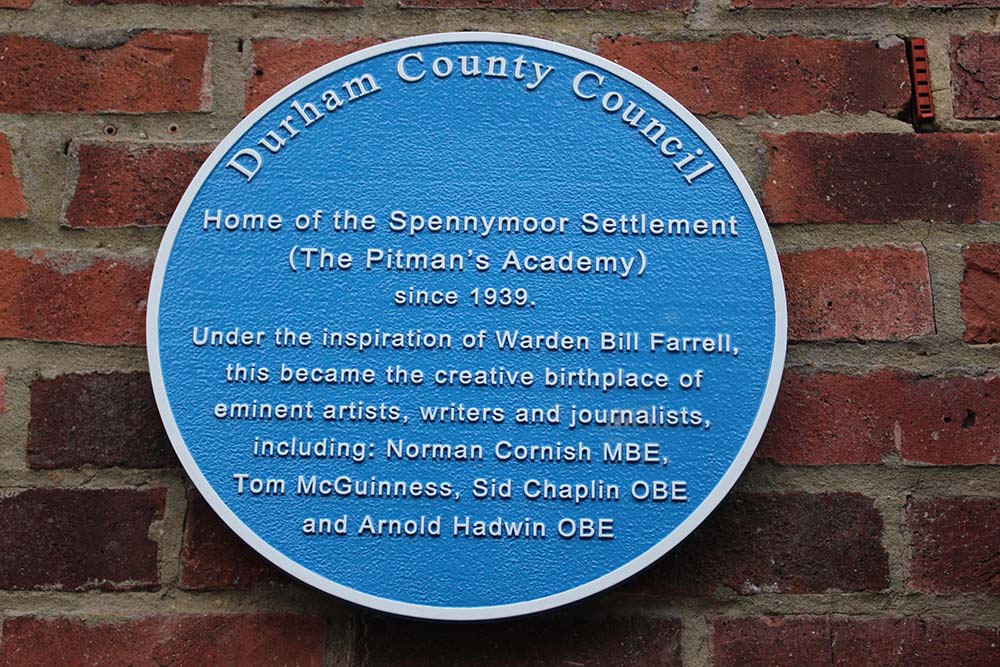
The Spennymoor Settlement was established in 1930 with funds from the Pilgrim Trust and it became a focal point in the Spennymoor community. It was a time of depression and unemployment was rife. The future looked grim, but under the inspired leadership of W.G. (Bill) Farell, accompanied by his wife Betty, it became a cradle of creativity for local people that enabled them to express themselves in visual arts, performing arts and crafts.
On Saturday September 18th a long overdue Blue Plaque was unveiled on the wall of the Everyman Theatre by Lillian Whitehead the oldest member of the Settlement, aged 100 years. The Chair of the Settlement Pauline Storey, Louise Defty who is Chair of the Spennymoor Youth Theatre Group and Malcolm Marsden the Treasurer, also addressed the large gathering of invited guests. The theatre was the venue for the ceremony and celebration to mark the achievements of this very special community organisation and all of the people who have been involved from the beginning.
The Settlement and its activities are historically important for the talent nurtured and the mutual support provided during challenging times. Not all of the names of previous members could be included on the plaque, but four stand out who eventually went on to achieve national and international recognition, and great acclaim.
Norman Cornish MBE, Sid Chaplin OBE, Arnold Hadwin OBE, and Tom McGuinness.
Refreshments were provided for the guests and a special performance was presented by the members of the Spennymoor Youth Theatre Group.
Further information at www.spennymoorsettlement.co.uk
‘A Way to the Better’ written by Robert McManners and Gillian Wales is available from the Spennymoor Settlement at £12.
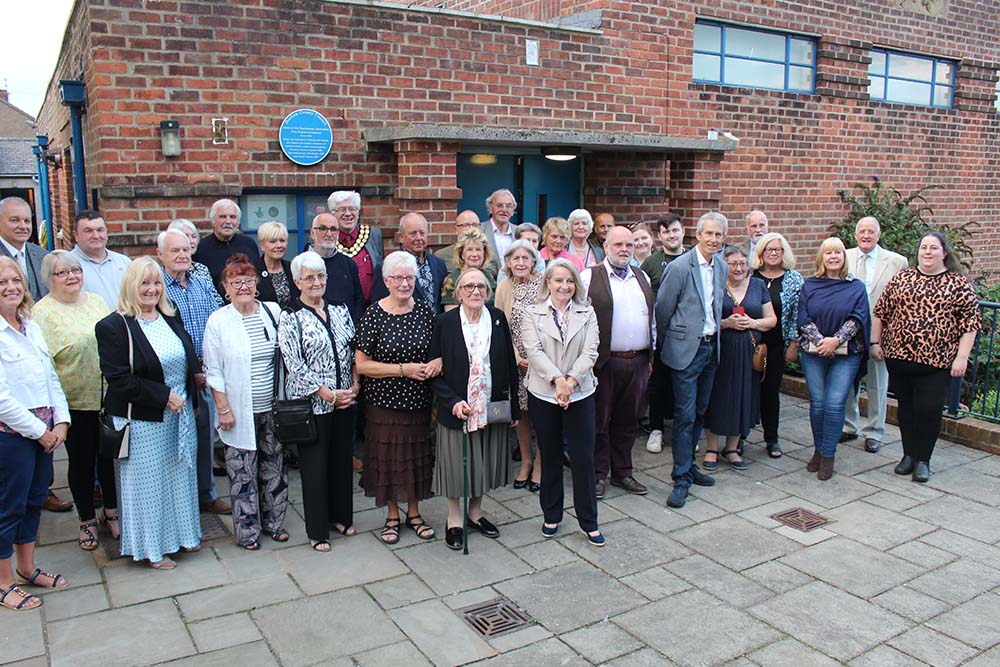
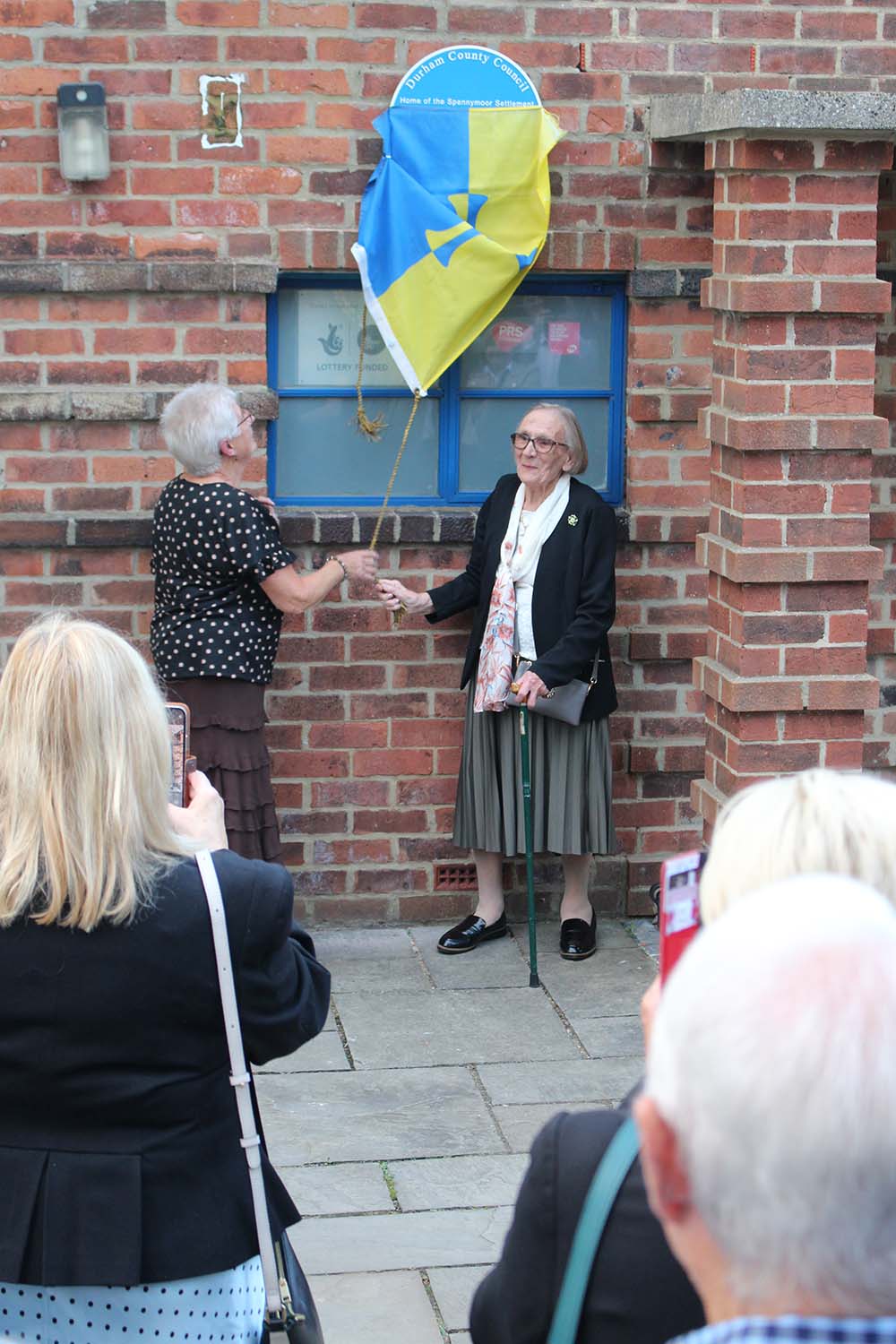
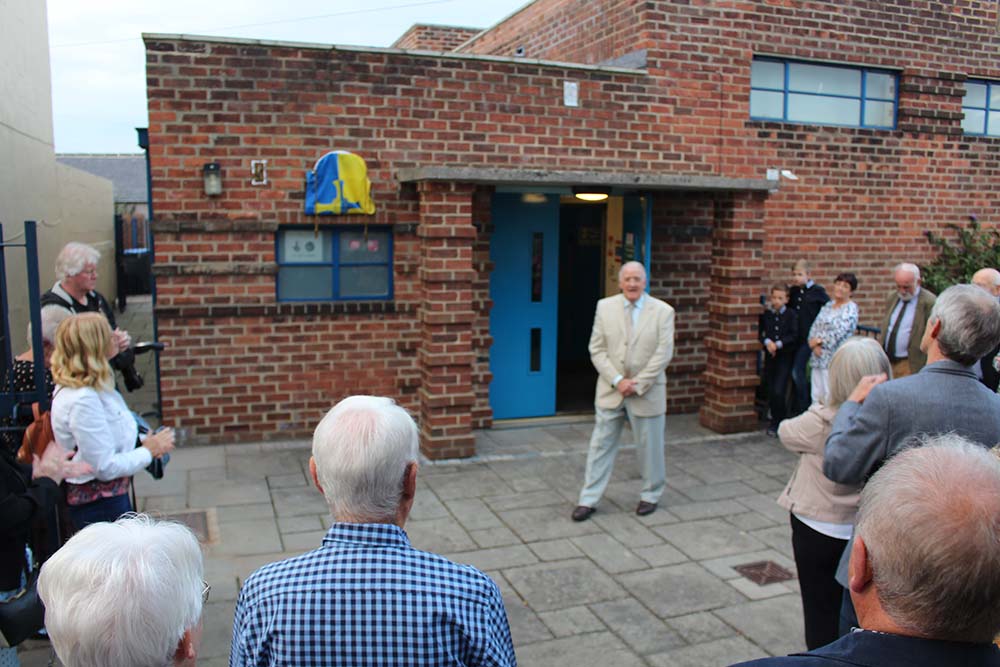

Behind The Scenes – Revealed:
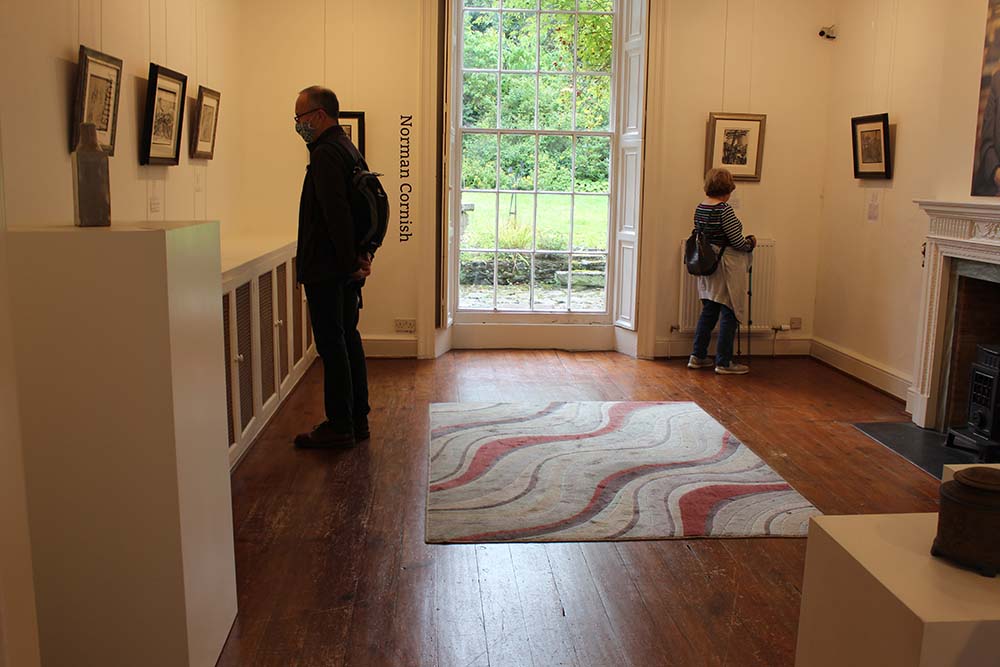
Norman Cornish ‘Behind The Scenes – Revealed’ opened on Saturday morning at Castlegate House Gallery in Cockermouth for a period of three weeks. This special collection of pictures all feature in the book of the same name published in 2017, and they help to show the creative process used by Norman Cornish including preliminary drawings and completed works.
For those who are unable to travel to Cockermouth in Cumbria, the owners of the gallery, Steve and Christine Swallow, have facilitated a 3D 360 degree tour of the exhibition which you can access by clicking the link below.
https://www.castlegatehouse.co.uk/exhibitions/norman-cornish-behind-the-scenes-revealed/
Whilst this isn’t a substitute for an actual personal visit, it does enable a walk around the exhibition, zooming into the works and seeing them hung in a gallery context.
The exhibition runs until Friday 8th October and is open each week until then from Wednesday to Saturday inclusive.
Further details may be found at www.castlegatehouse gallery 01900 822149
A warm welcome awaits from Steve and Christine Swallow.

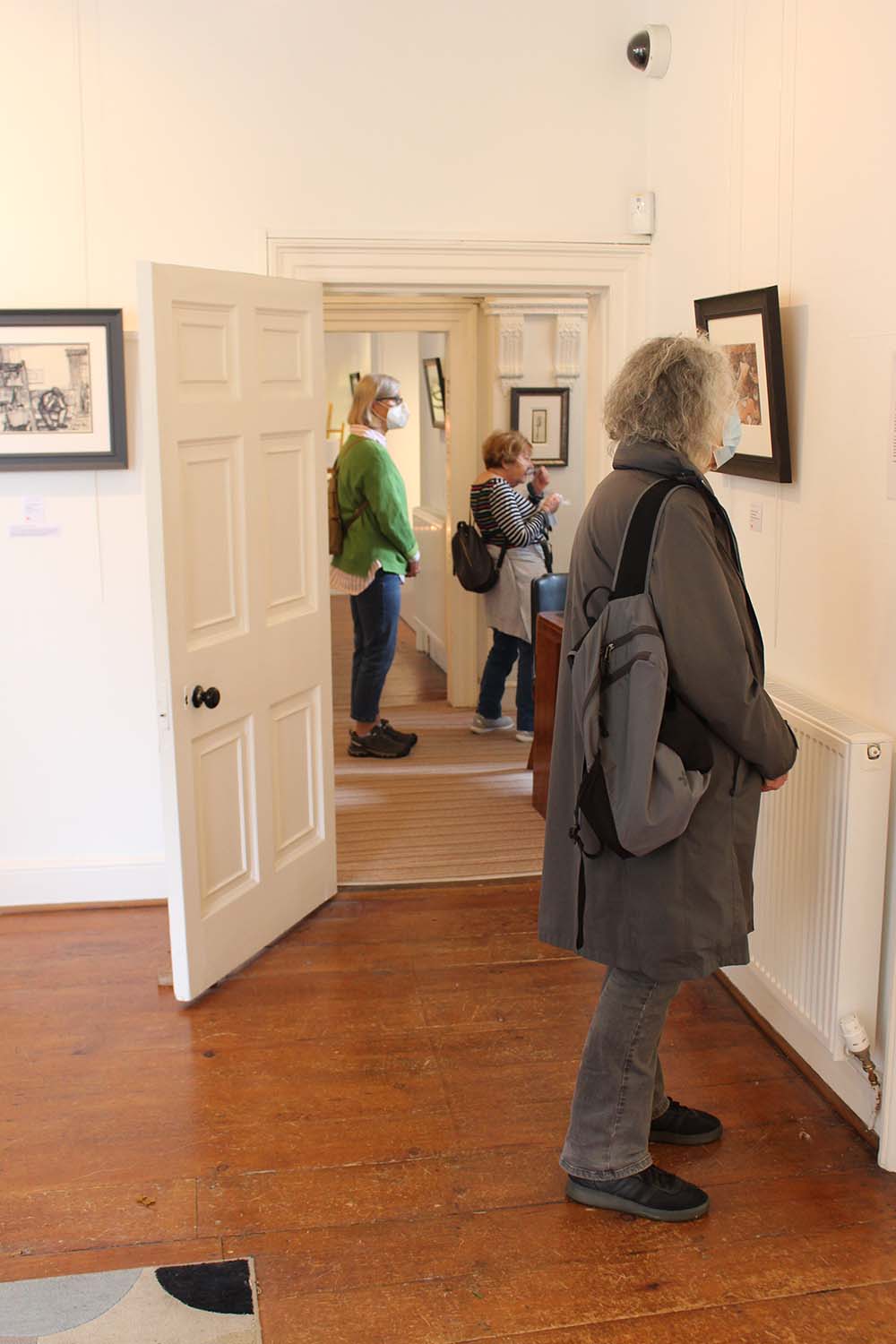
More Articles...
- Behind The Scenes: The Norman Cornish Centenary lecture 1919-2019
- Heroines of the Coalfield
- Culture and Community
- Forthcoming Exhibition
- Beamish Museum Part 3 : Make Your Mark
- One of the Lads
- Mainsforth Colliery
- The Pit Road - from Bishop’s Close Street
- Beamish Museum: Part 2
- Beamish Museum Latest News Part 1


